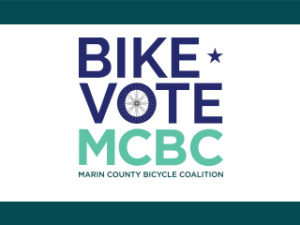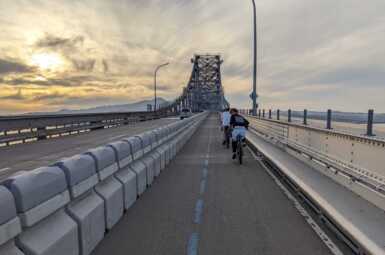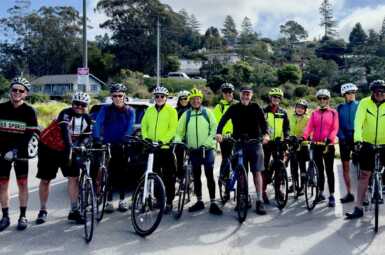March 2024 Election 2024 District 2 Supervisor Candidate Questionnaires
As a 501(c)(3) nonprofit organization, Marin County Bicycle Coalition cannot endorse candidates for public office, but we are able to share information so that you can arrive at your own conclusion. There is an open race for District 2, which is currently represented by Supervisor Katie Rice (click here to see a map of the district). If one of the candidates receives over 50% of the vote, they will win the election outright in the March primary. If no candidate receives a majority, there will be a run-off between the two top vote-getters in November.
Below are the four candidates’ responses to our questionnaire on bicycling in Marin, listed alphabetically by surname. We have made no content changes. We thank the candidates for their time and thoughtful answers.
Personal Travel
1. Do you ride a bicycle? If so, for what purposes and how often? If you don’t ride regularly, when was the last time you rode a bike (on vacation, for example)?
Brian Colbert:
I will always remember the incredible feeling of independence and freedom I experienced when I first learned to ride a bike as a child. I have been an active mountain biker since I attended college. I have fond memories of biking across the Bagan, the UNESCO World Heritage Site in Myanmar.
Now I often bike to and from the Marin Civic Center for meetings like the Transportation Authority of Marin which I chair, and I bicycle for shopping and meetings in San Anselmo and the surrounding communities in Marin. Additionally, I frequently used the mountain biking trails, often with my 13-year-old daughter.
Heather McPhail Sridharan:
Yes. I have always enjoyed bike riding since I was a kid in San Rafael riding to and from school, and playing bike tag in my neighborhood.
My entire family, including my four kids, all ride bikes regularly. For the past thirteen years, my kids have alternated between riding bikes or walking to our local Kentfield public schools.
Whenever we travel, we always seek out opportunities to rent bikes with a local guide and get to know places through the perspective of a bike. Some of our fondest family travel memories have been riding together on the rim of the Grand Canyon; Yosemite’s valley floor in different seasons; and getting to know cities like Marrakech, Medellin, Athens, Istanbul, Lima, and Madrid with bikes.
Ryan O’Neil:
I ride my mountain bike for recreation 3-4 days a week when time permits.
Gabe Paulson:
I ride about 20-40 miles per week primarily commuting to work and biking with my kindergartner to school. I have also biked competitively in Escape from Alcatraz (2x) and the Marin Metric Century.
Vision
2. In your own words, describe your vision for the future of transportation in this district and Marin County at large.
Brian Colbert:
By investing in and futureproofing our transportation infrastructure, we can reduce the negative externalities car-centric transportation produces.
As Supervisor I will focus on promoting a transportation network that connects communities throughout the county with busses and bike & pedestrian friendly greenways. One of my priorities will be to complete the North-South Greenway and the East-West Bikeway.
On the San Anselmo Town Council, we received a grant to analyze a variety of congestion relief actions in an area of town known and the Hub. We considered improvements to transit routes, ways to increase bicycle and pedestrian volume & safety. This is the kind of comprehensive transportation planning that I would like to see more of on a county level.
On the San Anselmo Town Council, I requested a study focusing on ways to improve downtown circulation with focus on bike and pedestrian safety.
Heather McPhail Sridharan:
Marin is now at an inflection point with affordable housing, particularly for our workforce and seniors. Two thirds of our workforce is commuting in since they simply cannot afford to live here. It is also essential that we have inclusive senior housing options since by 2027, more people will be over 60 than under 30 in our county.
Housing and transportation are intrinsically linked. Therefore, we need to invest in a spectrum of housing options which encourage non-vehicle transit modes and public transportation. This should include a range of housing options—including ADUs, affordable workforce housing, and simplified senior housing where amenities and transit are adjacent and projects highlight ADA accessibility.
Looking at future county planning requires a complete re-thinking about how our communities are shaped and creatively envisioning safer and more interconnected bike / pedestrian transportation routes; infrastructure; and more robust public transportation options for the future. All of this will require effective and responsive community engagement.
Partnerships and learning from other cities around the state are key. The “Building Bridges” Forum at Dominican University last summer provided many inspiring examples of ways to create affordable housing with walkable communities and access to public transportation in Marin through new, exciting collaborations and coalition-building, particularly for our most vulnerable communities.
I support the Transportation Authority of Marin’s first Countywide Transportation Plan (CTP). In particular, I commend TAM’s commitment to
transparency, equity, and inclusion reflected in the plan, specifically the Community Based Transportation Plans (CBTP) to advance equity and address transportation challenges in underserved communities.
I also support Seamless Travel Principles, which puts riders at the center of planning for a regionally integrated, world-class public transit system. I would like to see Marin’s transportation planning become more collaborative and integrated with our neighboring counties in the Bay Area, particularly since as mentioned above, ⅔ of our workforce is currently commuting in from outside Marin.
Finally, my transportation vision would include a strong commitment to maintain our protected open space and a transition to a fossil-free future.
Transportation is Marin’s biggest single source of greenhouse gas emissions. I would advocate strongly for improving and electrifying public transportation. Some other ways the County can work with local jurisdictions to aid the energy transition is to support government funding for and placement of electric vehicle chargers and programs to assist households with tax credits and subsidies for electric vehicles.
As with all county projects, funding should always be prioritized with an equity lens so that all members of our Marin community are part of the decision-making process in how to allocate funds to ensure benefits meaningfully reach those that need them most.
Ryan O’Neil:
Electric transportation is on the rise via e-bikes and electric cars. We need to support this trend with safe, effective, and efficient infrastructure throughout the county. Additionally, I believe it is important to support the expansion and service of the SMART train, both the rail service and the bicycle and pedestrian pathway along the corridor. Working together with city and town leadership, we can improve transportation throughout the county for all residents.
Gabe Paulson:
I envision multi-modal transportation that accomodates all ages and different distances. As a Board member of SMART, I have voted for and promoted bike/walking alongside the tracks, voted on the North greenway connector and am interested in a connected set of paths and bike routes.
For vehicles, I strongly support public transportation, particularly electric buses and last-mile shuttles for the ferry, SMART and other regional transit lines. I helped get more EV chargers installed in Bon Air shopping center and continually look for ways to promote electrification of automobiles, particularly through installing more charging stations in multi-tenant housing.
SChool Commutes
3. Many parents are afraid to let their children travel to school by foot or by bicycle because of the high volume and speeds of car traffic, choosing to drive them to school.
Should efforts to calm traffic focus first on (A) driver education or (B) physical infrastructure, like speed cushions and raised intersections, that slows cars around schools?
Brian Colbert:
As Chair of the Transportation Authority of Marin and as a member of the Safe Routes to School Ad Hoc Committee, this issue has been a priority of mine for some time. I am proud to say that TAM has recently funded additional crossing guards in Marin. Physical infrastructure improvements are a proven way to keep school children safe.
Heather McPhail Sridharan:
As Chair of the Kentfield School District’s Safe Routes to School Program for the past 13 years, I have spent much time thinking about and considering options related to this question.
From my perspective, I think we should focus efforts (and financial investment) on making it safer for kids to ride to and from school. Reaching drivers in an effective, targeted way is very difficult to do. There have been some campaigns that I have been involved with, such as the recent “Eyes Up Marin”, that focus on driver safety awareness with pedestrians and cyclists, but I think it is very difficult to measure the success of the program.
In my experience in the Kentfield School District, the Safe Routes to School model is far more effective in increasing the number of kids riding and walking to school. I think it is important to invest in infrastructure safety improvements, like flashing crosswalks, dedicated bike lanes, and no parking zones in low visibility areas around schools.
Bike and pedestrian safety education for all kids during their school day is very important. It is also critical to educate parents on how to encourage their children to take the suggested safe routes to school routes as designated by their Safe Routes to School district map.
Finally, the TAM-funded crossing guard program has been extremely effective in calming traffic throughout Marin; I would like to see it expanded to include more intersections since I think it might be the single most effective program to calm traffic around schools.
Ryan O’Neil:
Education and awareness are always important and, if effective, can help eliminate the need for physical infrastructure around schools. Safe Routes to School is a great program here in Marin and elevates awareness with students and families. I also support the crossing guards presence at key intersections around neighborhood schools and believe we need to continue to fund this program.
Gabe Paulson:
Both approaches are necessary and have cost-effective components. Driver education with regional and state legislation will be necessary. Infrastructure is statistically more effective but often conflicts with public safety requirements (fire departments prefer no speed bumps) and budget constraints. I also advocate inexpensive radar signs that can capture data to help deploy traffic police whose resources are limited.
Safety
4. Traffic deaths and injuries are on the rise, both nationally and in Marin (this includes all road users, not just bicyclists). The Transportation Authority of Marin and the county’s cities/towns are in the process of adopting a Vision Zero policy, namely an explicit goal to eliminate traffic deaths in Marin by 2050. However, some projects that would improve road safety may result in more congestion, at least in the short term.
Do you see prevention of injury and death for all users as the highest priority for Marin’s roads? Or should congestion and delay for drivers be minimized, even if this increases risk for pedestrians and bicyclists?
Brian Colbert:
Prevention of injury and death must be the priority. I am proud that the Transportation Authority of Marin has adopted the 2024 Marin County Local Road Safety Plan (LRSP), which included a Vision Zero Statement and Vision Zero Goals to achieve zero deaths or serious injuries on Marin’s roadways by 2050.
Heather McPhail Sridharan:
We should never put pedestrians, bikers, nor any resident at risk. Safety should always be the highest priority.
Ryan O’Neil:
Prevention of injury and death should always be the highest priority.
Gabe Paulson:
Prevention of injury and death is a higher priority for me than reducing congestion for several reasons:
Creating riskier traffic patterns to reduce congestion often lead to induced demand (eg building another lane on Hwy 101 will often put more cars on the road causing the same congestion)
Marin is aging which requires increased safety measures
Voters have expressed more concern about traffic calming than congestion, particularly in post-covid traffic patterns.
Climate Change
5. The California Air Resources Board has stated that, even with aggressive adoption of electric cars, Californians need to drive 25% less by 2030 to achieve our greenhouse gas reduction goals.
What policies and projects in Marin would support promoting mobility while actually reducing overall driving?
Brian Colbert:
I would like to build on my work as a Director of Marin Transit, where I focused on improving ridership and the riders experience through a variety of measures like keeping fares affordable, focusing on reliability, and the electrification of our fleet.
Heather McPhail Sridharan:
We, as a county and state are in an exceptionally difficult nexus between making the necessary shift away from fossil fuels as quickly as possible, while not leaving any community behind. Every county and state policy related to the fossil fuel transition needs to make equity a fundamental part of the discussion since low income communities inevitably will face the heaviest burdens.
Marin has always been at the forefront of progressive environmental policies. I support the climate change mitigation and adaptation policies and programs already in place at the county level for moving to renewable energy and transitioning away from fossil fuels including “Marin Can”, an innovative community-driven campaign to dramatically reduce greenhouse gas (GHG) emissions, prepare for climate change impacts, and meaningfully address and integrate equity.
I also wholeheartedly support the efforts at the County and all of Marin’s cities and towns to have either adopted a Climate Action Plan (CAP) or have incorporated Climate Action planning into their General Plans.
Finally, I met with Dana Armanino, Principal Planner at the County Sustainability Team, and applaud her efforts to coordinate the Marin Climate & Energy Partnership (MCEP), a collaboration made up of representatives from all eleven cities and towns in Marin, the County, the Transportation Authority of Marin (TAM), the Marin Municipal Water District (MMWD) and the Marin General Services Authority (MGSA). The mission of MCEP is to reduce greenhouse gas (GHG) emission levels to the targets of Marin County and local municipalities, consistent with the standard set by AB32.
Ryan O’Neil:
Supporting the shift to electric vehicles and encouraging residents to walk, bike and carpool will help reduce overall driving in our communities. Additional strategies include making neighborhoods safe for kids to ride bikes to schools, improving and integrating bike paths and pedestrian walkways and promoting awareness around the need to reduce our carbon footprint.
Gabe Paulson:
- More transit-oriented housing. I introduced this requirement to the Larkspur Planning document and intent to expand to district 2 and the county
- More electric buses. Working with TAM and MTA to ensure the proper subsidy and promotion begins to restore services particularly to pre-covid levels
- More outreach and promotion of “Safe Routes to School” and other multi-modal programs.
- Better last-mile solutions for SMART/Ferry. I have been active on the Board evaluating the Santa Rosa pilot
- Continuing pathways for SMART
Large Projects
6. While Marin has seen several important active transportation projects advance to completion over the past decade (the Cal Park Hill Tunnel, the Corte Madera Creek Bridge), other crucial projects have been slower (the SMART pathway) or continue to languish (the Alto Tunnel).
Do you support studying the potential environmental impacts and benefits of opening the Alto Tunnel to bicycle/pedestrian access so that the project would be eligible to apply for state and federal construction funding? Why or why not?
Brian Colbert:
I am open to study this proposal in order to make a more informed decision regarding the future the Alto Tunnel.
Heather McPhail Sridharan:
Yes I wholeheartedly support studying the potential environmental impacts and benefits of opening the Alto Tunnel to bicycle / pedestrian use. I think it could offer cyclists and pedestrians the option to safely bypass hills and avoid busy roads.
Ryan O’Neil:
I do support studying the potential environmental impacts and benefits of opening the Alto Tunnel to bicycle/pedestrian access and potentially quality for state and/or federal construction funding. Opening this passage and creating a multi-use pathway for Marin residents furthers the vision of providing access for potential commuting and recreational activities for Marin residents.
Gabe Paulson:
I do, I believe the Alto Tunnel would be a key connector of South Marin to Central Marin. Right now there are both steep and a less-steep alternative that I have biked frequently. In light of my prioritization of electric buses and public transport, I would closely at the cost-benefit analysis.
Richmond-San Rafael Bridge
7. In 2019, a bicycle/pedestrian pathway was installed on the upper deck of the Richmond-San Rafael Bridge, providing access between Marin and Contra Costa County for those traveling outside of buses and motor vehicles. While some believe that the pathway should be left in place permanently, others have called for the pathway to be replaced by a third car lane during peak periods (at a cost of at least $70-90M) or for the bridge to be returned to its pre-2019 state (two car lanes and a shoulder, with no bike/pedestrian access).
Which outcome do you support, and how strongly do you hold that position?
Brian Colbert:
This issue has been highly contentious, but I ultimately believe that to most pressing concern is not the bike lane in and of itself, but traffic congestion on the San Rafael side.
Heather McPhail Sridharan:
To simply add a third lane during peak periods will not guarantee alleviation of traffic since there are other considerations that cause congestion along that corridor. However, I need to spend more time on this issue. I do not feel qualified to have a strong opinion yet. The bridge is a primary connection corridor, and whatever we do will be even more critical for our communities in 30-50 years. This question has too many nuances and variables for me to take a strong position at this time without more study of all the available options.
Ryan O’Neil:
I support replacing the bike lane with a third car lane that can be used during peak commute periods. The bicycle usage has not supported the need for a dedicated bike lane.
Gabe Paulson:
I don’t believe the opening the bike lane would solve the congestion at the west end of the bridge. However, I am concerned in the low usage and the extra pollution in Richmond.
Currently, I don’t think the ridership is high enough and would be willing to negotiate a target number and timeline.
Wrap-Up
8. Why should people who ride bikes (or those who want to ride bikes but don’t yet) vote for you?
Brian Colbert:
My campaign is focused on enhancing Marin’s quality of life, promoting economic vitality, addressing climate change, and building community. Bicycle policy is uniquely at the center of all of these goals.
By investing in and futureproofing our bike infrastructure, we can create a transportation network that connects communities throughout the county with bike and pedestrian friendly greenways.
Such an active transportation network would foster walkable, bikeable neighborhoods that are key to thriving and sustainable local economies.
All the while reducing the negative externalities car-centric transportation produces.
Communities where bikes safely take children to school and adults to a nearby local business are healthier and more inviting.
I have the local government experience and proven ability to work with diverse stakeholders to implement the meaningful changes needed to align Marin’s policies with Marin’s bike-friendly culture.
Heather McPhail Sridharan:
As mentioned above, I have been deeply involved with the Safe Routes to School Program for the past thirteen years while my kids have been in school. I have worked tirelessly and effectively with County Officials, Public Works Staff, Law Enforcement, Community Members, Non-Profit Organizations, School Administrators, Parents, and Students to make our community safer to ride bikes and get more cars off the road.
As Chair of the program, I received state and county recognition for the innovative approach I developed to have a team of 20 parent volunteer Neighborhood Captains from each of our feeder communities. During my tenure, we are proud to have over 70% of our students choosing a green alternative to get to and from school.
To learn more about my background, experience, priorities, and see the breadth and depth of support in our community with 500+ endorsements, please check out my campaign website: www.heatherformarin.com
Thank you. I would be honored to earn your vote.
Ryan O’Neil:
Whether you are a person who rides a bike or not, this election offers the opportunity to bring fresh thinking and leadership to the Board of Supervisors. I am driven to public service by the strong sense of responsibility to protect our beautiful county by addressing the complex challenges we are facing in relation to the advancing effects of climate change, the need for affordable housing in our communities, and addressing the social and economic fallout from the pandemic.
I hope I can count on your vote!
Gabe Paulson:
I am an active biker and also have promoted biking as an elected official. My overall principle is promoting the greatest public benefit. This means considering our rapidly aging and less mobile population, the needs of the middle class that are struggling with energy costs and the environment which is at a critical tipping point.
members make it happen!
We’re fighting for a more bike-friendly future in Marin. Are you with us? Join Marin County Bicycle Coalition today.




